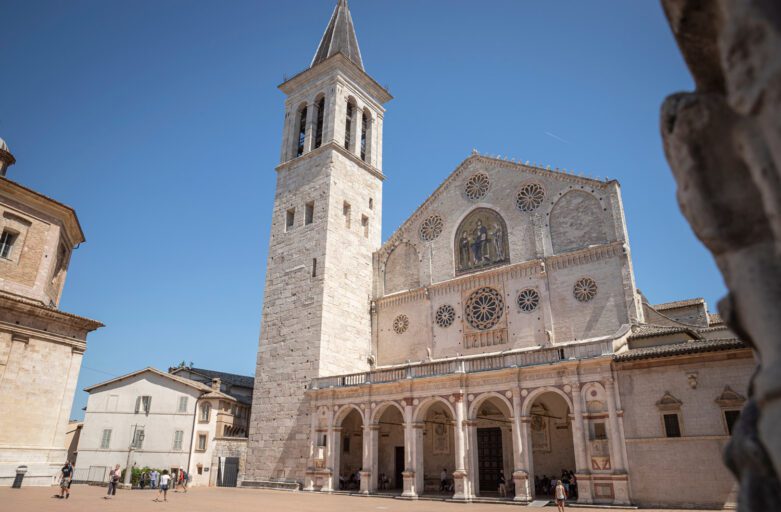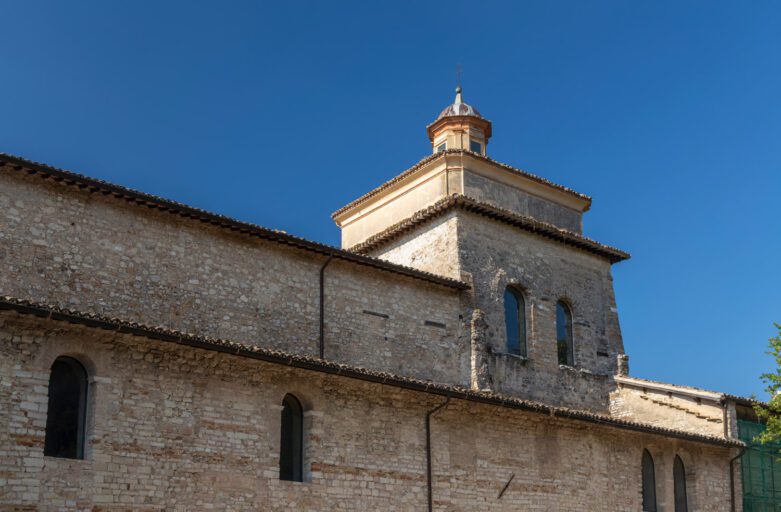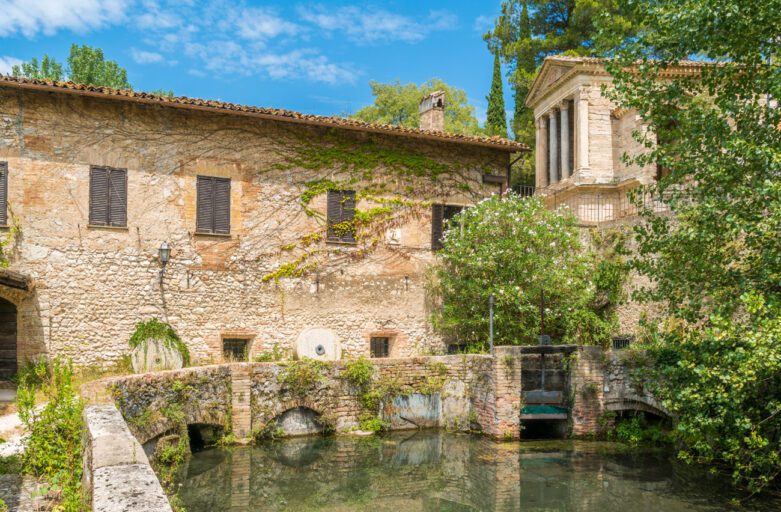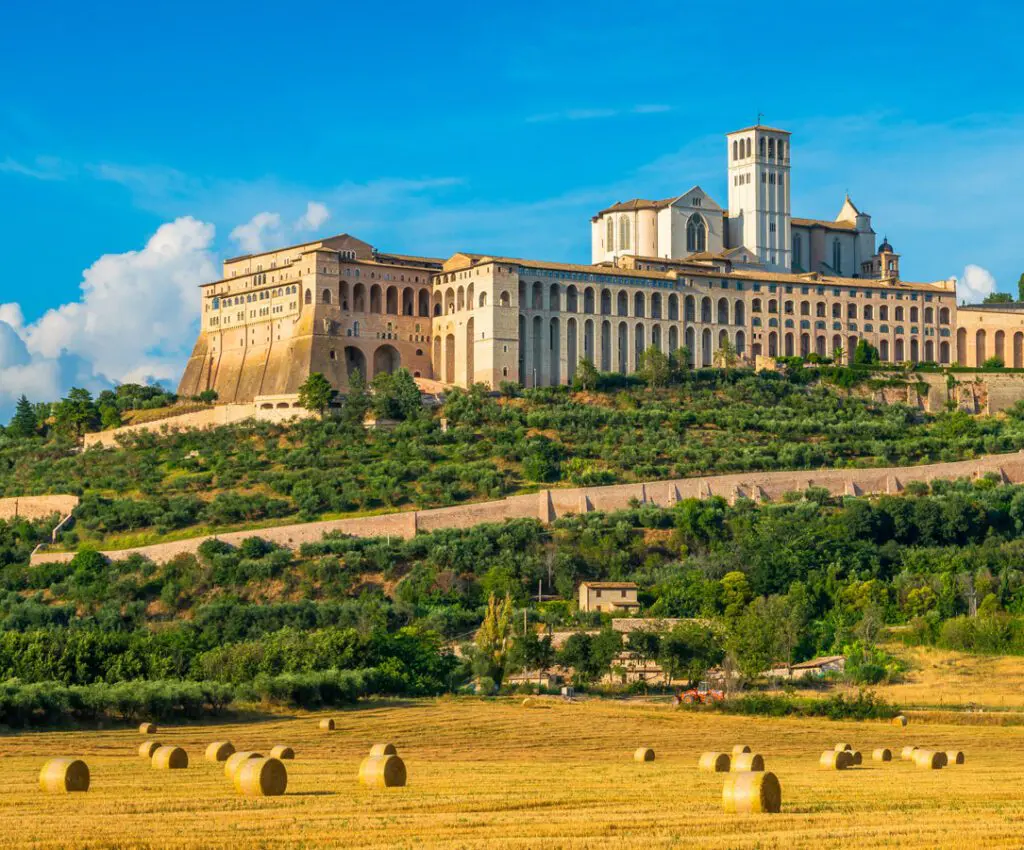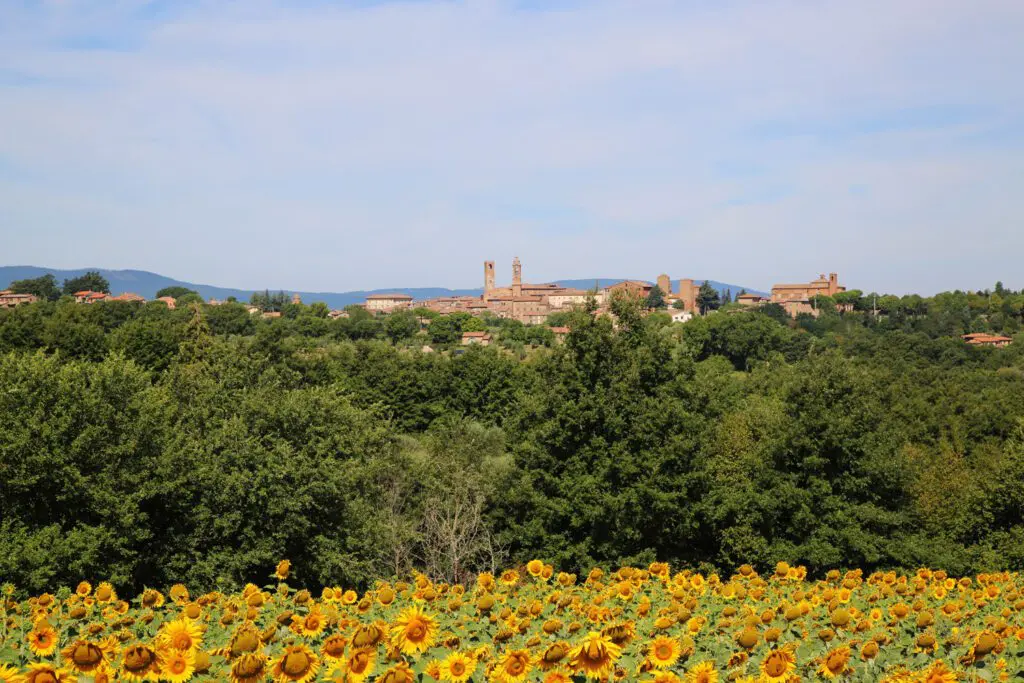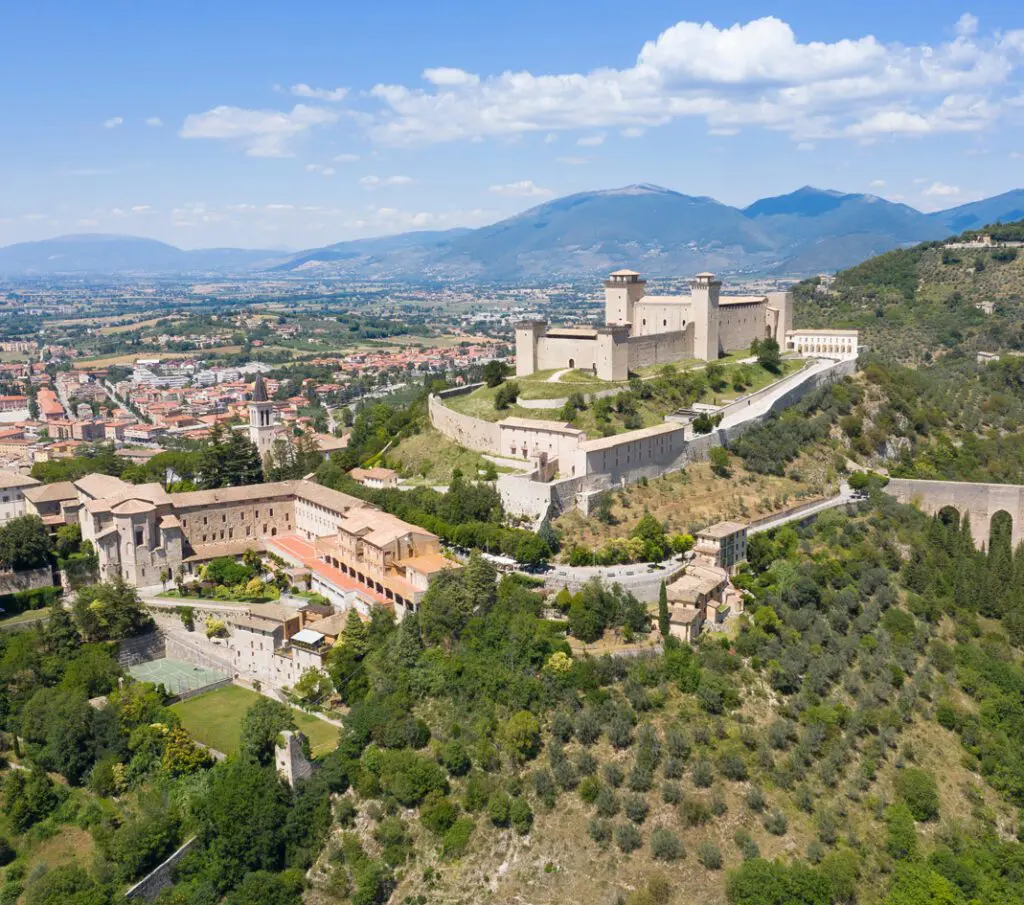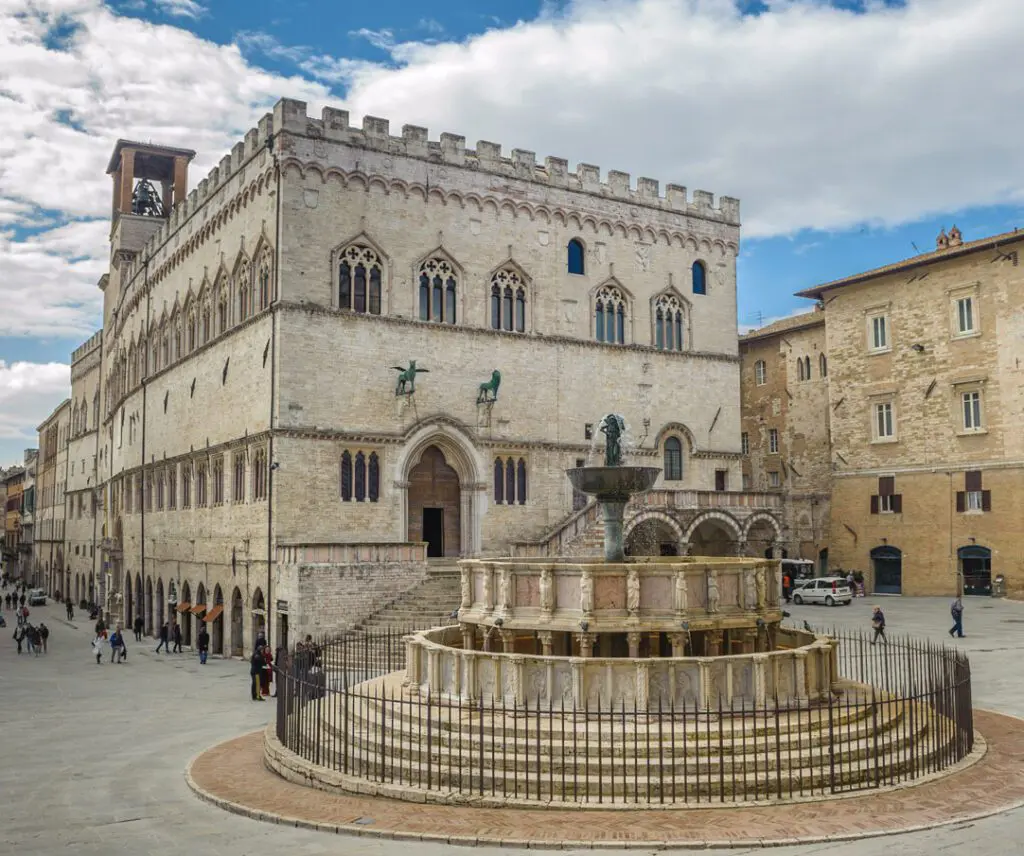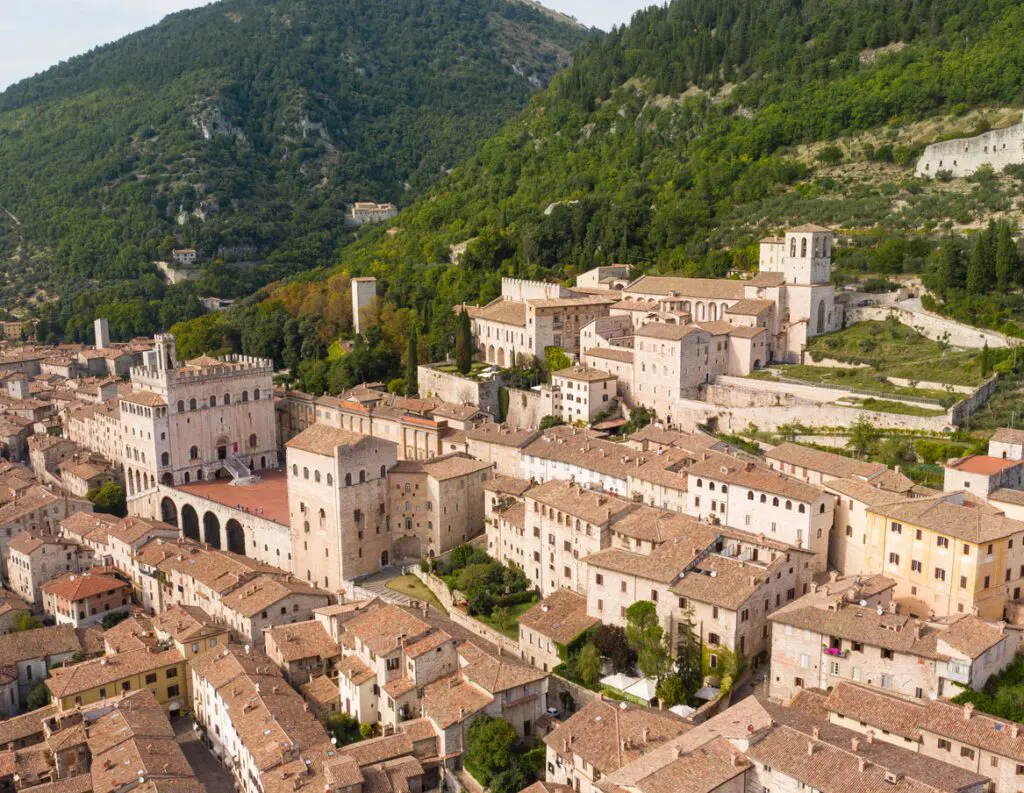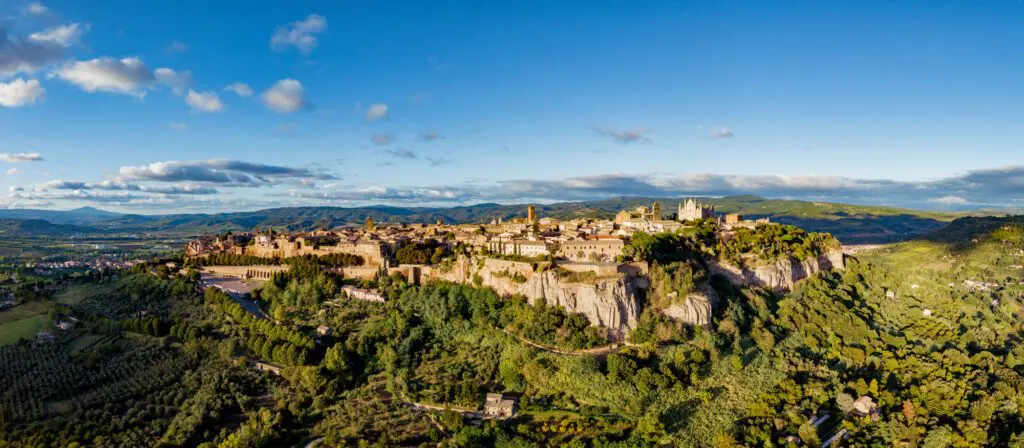The Bridge of Towers as Was Seen by Goethe
In September 1786, the great German poet, J. W. Goethe (1749 - 1832), left for a journey to the discovery of Italy, that would last nearly two years. This adventure, overfilled with beauty, would later inspire his Italian Journey. In the pages of that report, a memory of Goethe's visit to the Bridge of Towers (Ponte delle Torri) in Spoleto is also included. He recalls, “I ascended to Spoleto, and reached the aqueduct, that is also used as a bridge to connect two mountains. Its ten arches, that cross the valley, are built in stone; they have been there for centuries, and carry water to every part of the town. This is the third monument of Antiquity I see; and, one more majestic one. The architecture of those times is almost like a second Nature, in accordance with civic needs. . .”
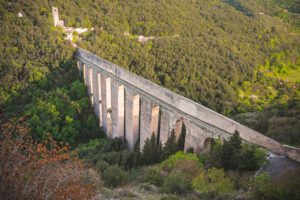
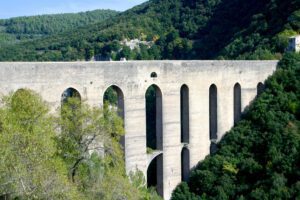
Goethe Knew
Goethe ends his descriptions with a witty comment, that catches the very essence of this work of architecture. He says that some constructions of past epochs were like a “second Nature,” that is, they were capable of merging with the natural environment all around – setting themselves in perfect harmony with it, but at the same time meeting the practical, civic needs they had been designed for. Well, the Bridge of Towers in Spoleto surely is a fine example of such “natural” architecture.
Two Mysteries: Its Name, Its Construction
The Bridge of Towers is a colossal one, more than 236 meters (700 feet) long and some 80 meters (240 feet) high. Its name comes from Latin pons inter torres, literally “a bridge between towers.” That may simply refer to its tower-like pillars, but otherwise, it might add a detail about the history of this construction, letting us conjecture that two actual towers guarded its entrance and exit. One further interpretation explains its name with reference to the strongholds at both ends, namely the Albornoz Fortress and the Fort of Mills (Fortilizio dei Mulini).
As a matter of fact, the Italian name Ponte delle Torri was used only starting from the 18th century. The bridge had obviously been built before, but – when? It has proved hard to find an exact date. The main hypotheses are two, and we will be examining them presently.
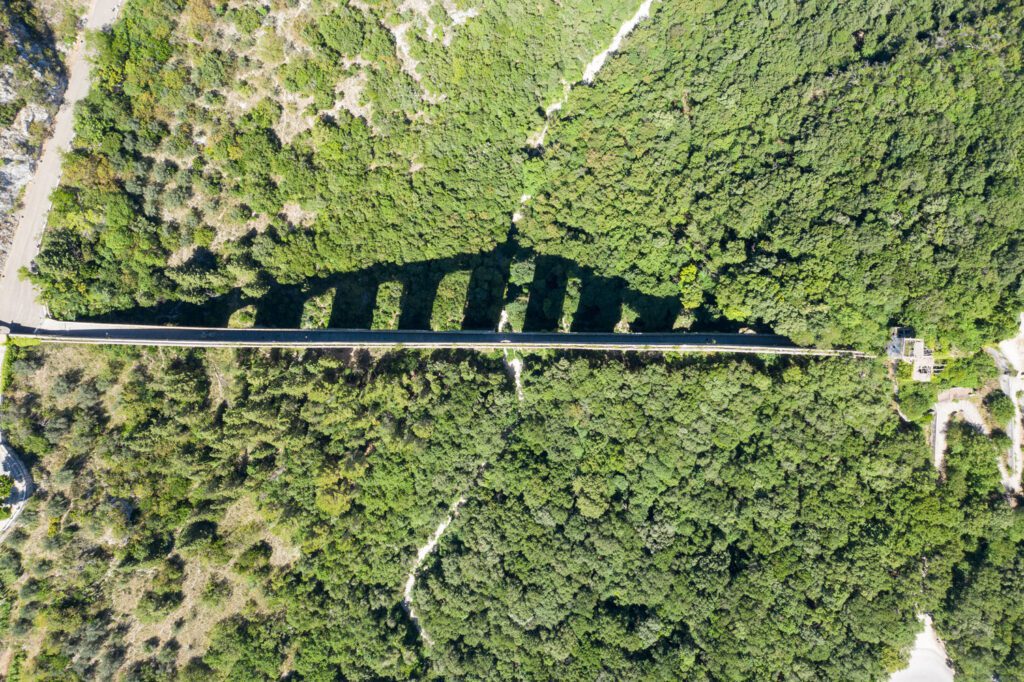
Roman Ruins, plus Albornoz
According to the first hypothesis, the bridge rose on the remains of a structure from the Roman Era, about which however no document exists; while its current look should date back to the mid-14th century. This conjecture is strengthened by the fact that after 1353 the whole area was transformed. Spoleto fell under the power of Cardinal Egidio Albornoz (1310 ca - 1367), whom Pope Innocent VI had appointed his Vicar General in the Papal States. Albornoz entrusted architect Matteo di Giovannello (1300 ca - 1383), a.k.a. Gattapone, with the building of a stronghold, that would be later named Albornoz Fortress. A massive structure designed in order to keep the whole territory under control.
Wall and Verse
The second hypothesis is based on three elements: (a) the existence of parts of a Romanesque wall, 12th century, in two pillars in the middle; (b) the great fame of this bridge already in the mid-14th century. It was in fact mentioned in many documents, among which the Dittamondo (ch. 10, lines 82-90) written by a Tuscan poet, Fazio degli Uberti, in 1345-67; (c) the absence of the Cardinal's escutcheon. All of three elements would make us predate the building to the end of the 13th century, therefore independently of the changes sponsored by Albornoz.
So, Spoleto's Bridge of Towers can be surely seen as a masterpiece of late Medieval engineering
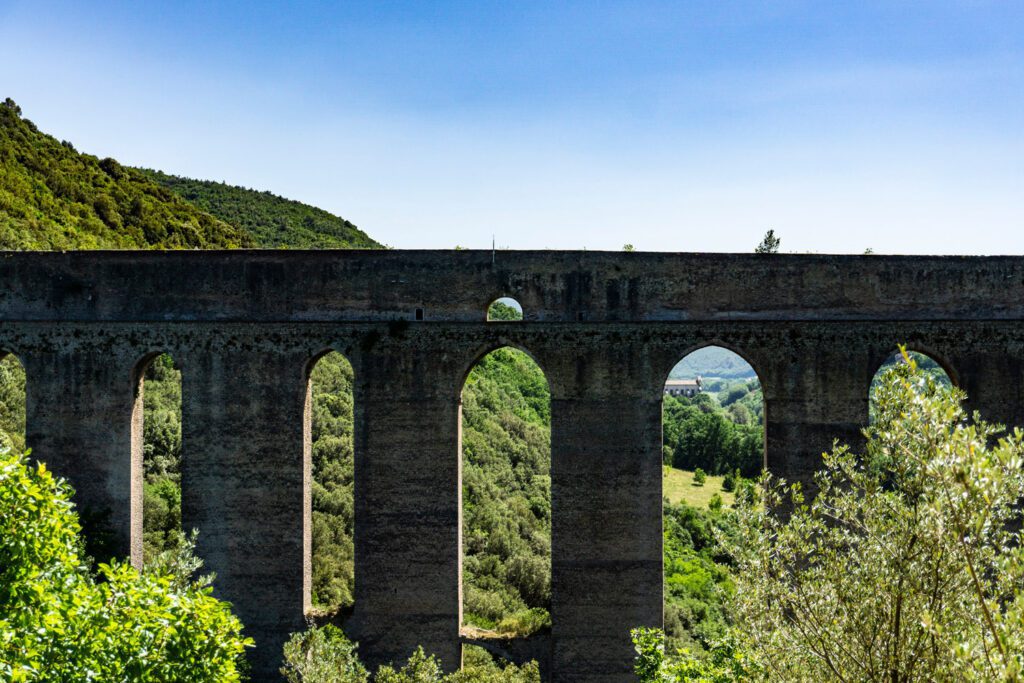
In the Ends
At each end of the bridge there is a hill and a fortress: the Albornoz Fortress overlooking Colle Sant'Elia (Holy Elijah's Hill), and the Fort of Mills standing out on Monteluco (Forest Mount, from Latin lucus). The latter was build precisely in order to guard the bridge, and besides, it would work as a mill as late as the 19th century. In fact, before being directed into the bridge aqueduct, the water reached 14th century tanks and activated two mills that belonged to the Commune (Town Hall).
The Bridge of Towers can be crossed end-to-end on foot while admiring the majesty of this structure that overlooks the whole valley. As for the valley, it can be seen in all of its splendor from a large window created in 1845.
After having crossed the bridge and reached the Fort of Mills – that will provide a new perspective vista on the bridge itself and the Albornoz Fortress – you may follow many paths (checked by CAI Club). They will lead you to some hermitages hidden in the thick vegetation, as well as to Spoleto's Basilica of Saint Peter.
The Fort is the starting point of a panoramic walkway called Giro dei Condotti (Round of Ducts). As its name suggests, it follows the routes of the aqueducts that will finally lead back to the Bridge of Towers.
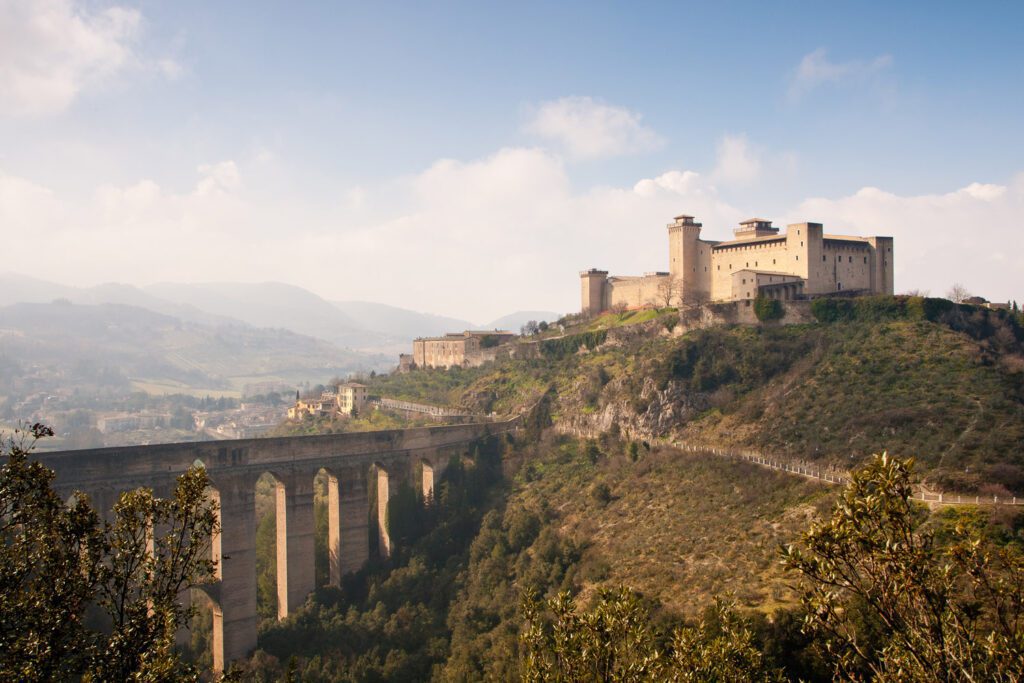
INFO
Location
Via Giro del Ponte, 06049 Spoleto PG
Contacts
info@secretumbria.it
